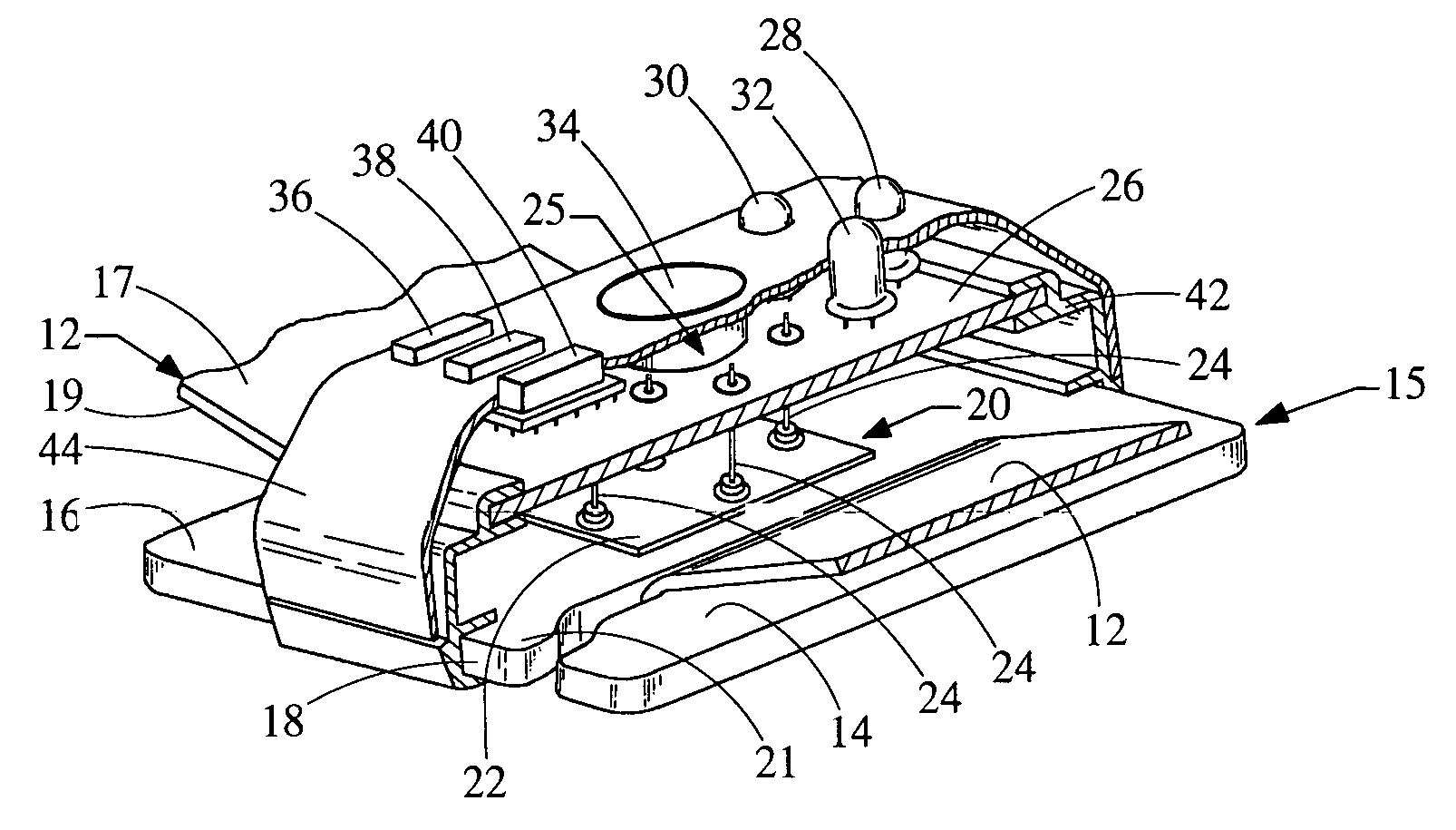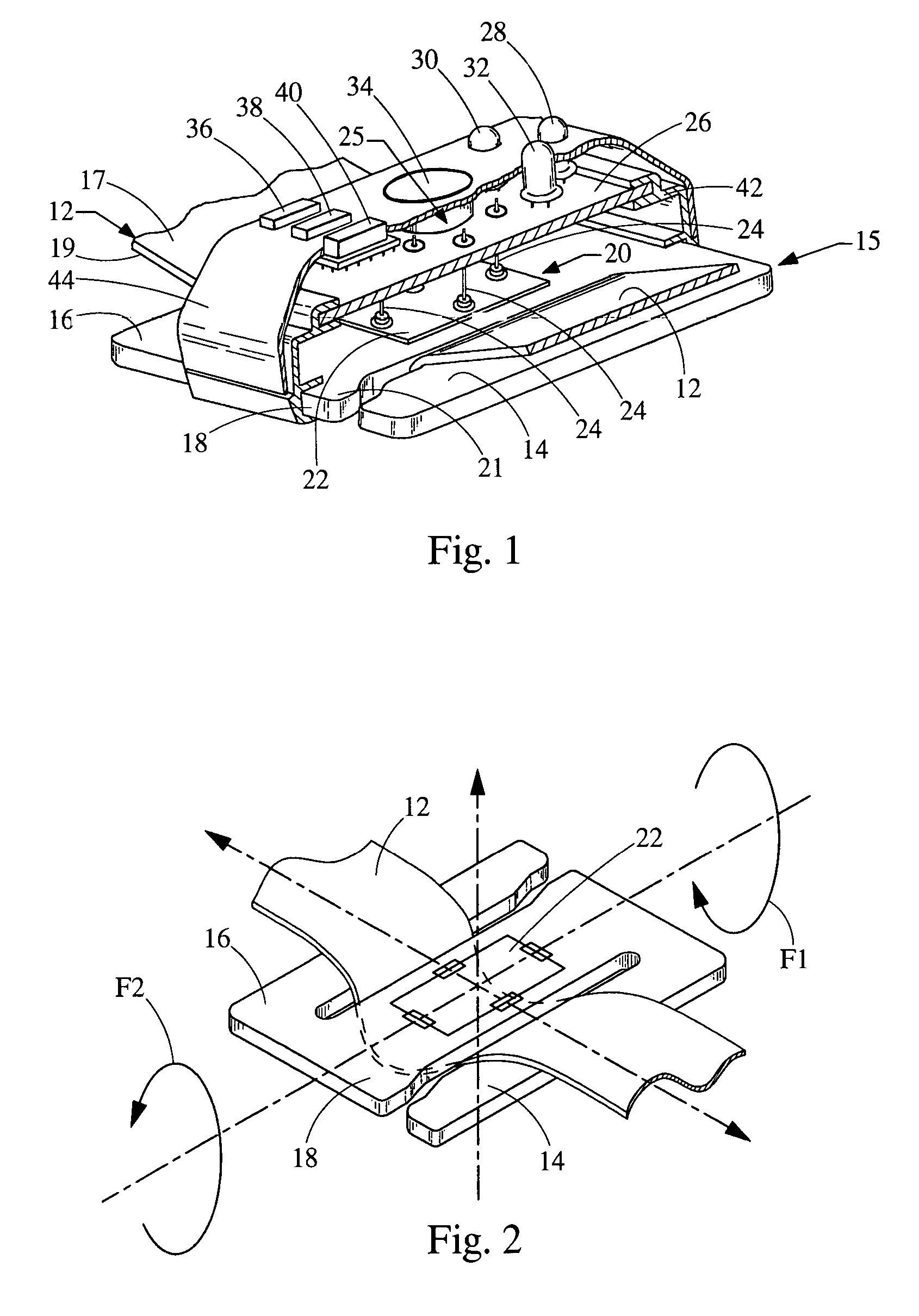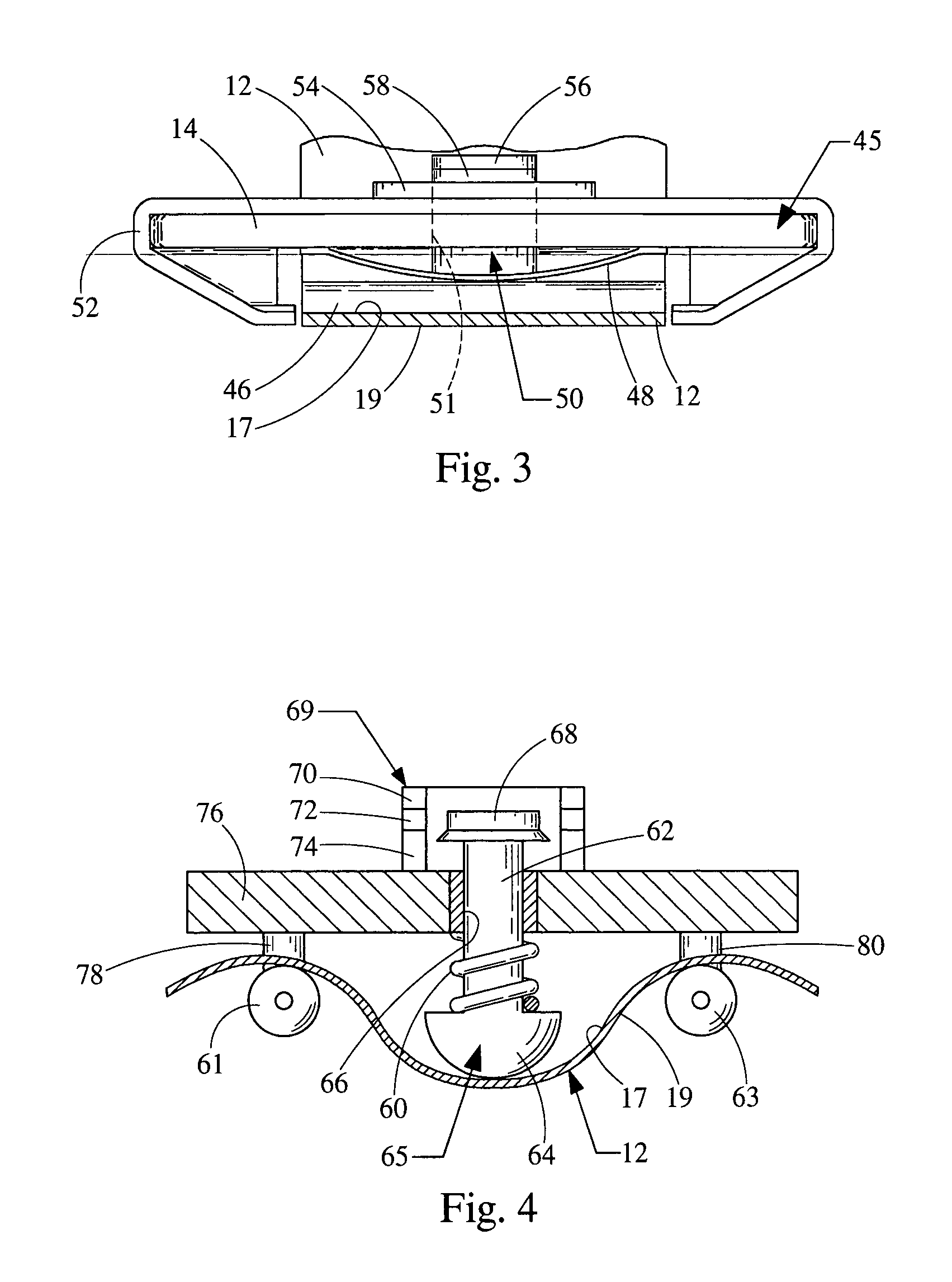Seat belt tension indicator
a seat belt and indicator technology, applied in the field of seat belt tension indicators, can solve the problems of not being able to objectively know when adequate belt tension has been applied, the general public does not have a convenient means to determine if the seat belt tension is proper, and the third of incorrectly installed child seats, etc., to achieve the effect of convenient adaptation
- Summary
- Abstract
- Description
- Claims
- Application Information
AI Technical Summary
Benefits of technology
Problems solved by technology
Method used
Image
Examples
Embodiment Construction
[0016]Referring now to FIGS. 1 and 2, an apparatus, specifically a seat belt tension indicator, adapted to determine if seat belt tension is within a predetermined range embodying the principles of the present invention is illustrated therein and designated at 10. As its primary components, the seat belt tension indicator 10 includes an S-clip 15 and a force sensing device 20.
[0017]As illustrated, the S-clip 15 includes first, second, and third sections or members, in the form of first and second legs 4 and 16, and center section 18. The first leg 14 and second leg 16 of the S-clip 15 extend from opposite ends of center section 18. The center section 18 is located between the first leg 14 and the second leg 16. The S-clip 15 is designed to have the belt 12 interwoven between the center section 18 and legs 14, 16 in a serpentine fashion. Each leg 14 and 16 forms a tooth 21 to retain the seat belt 12 in the S-clip 15. The first leg 14 and second leg 16 contact the bottom web surface 1...
PUM
 Login to View More
Login to View More Abstract
Description
Claims
Application Information
 Login to View More
Login to View More - R&D
- Intellectual Property
- Life Sciences
- Materials
- Tech Scout
- Unparalleled Data Quality
- Higher Quality Content
- 60% Fewer Hallucinations
Browse by: Latest US Patents, China's latest patents, Technical Efficacy Thesaurus, Application Domain, Technology Topic, Popular Technical Reports.
© 2025 PatSnap. All rights reserved.Legal|Privacy policy|Modern Slavery Act Transparency Statement|Sitemap|About US| Contact US: help@patsnap.com



